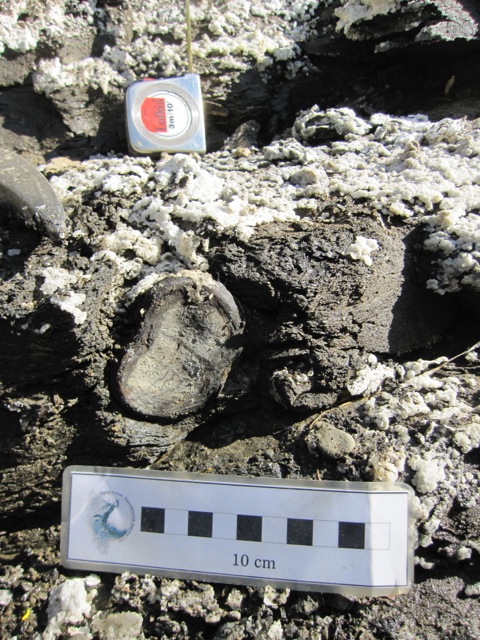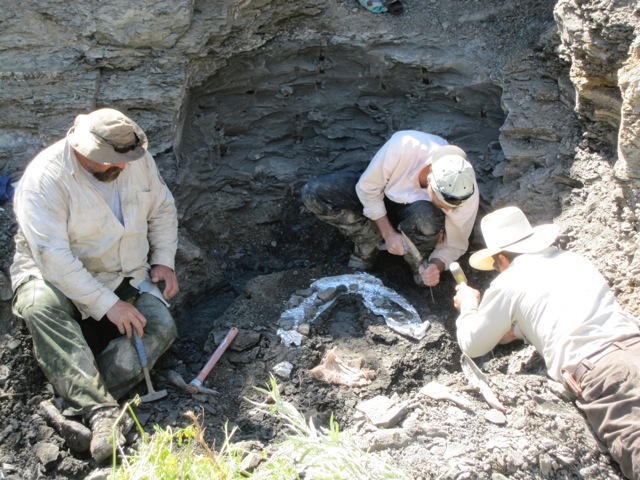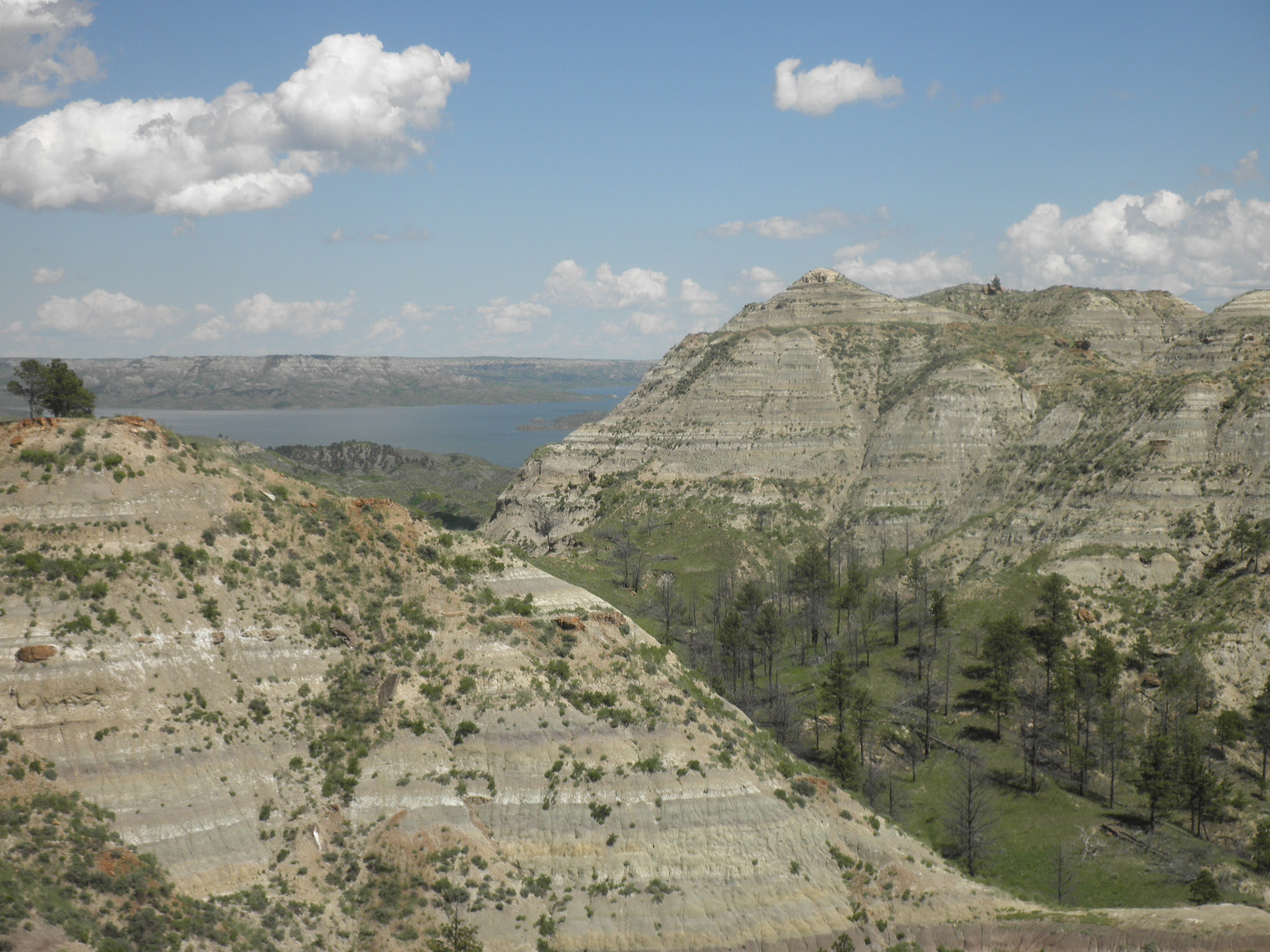Alaska scientists help name new elasmosaur species from Montana
April 13, 2017
Theresa Bakker
907-474-6941

A fossil discovered by a Montana hunter seven years ago is a new species in an ancient marine reptile group known as plesiosaurs. In a paper published Thursday, April 13 in the Journal of Vertebrate Paleontology, scientists at the University of Alaska Museum of the North and the University of Oxford have named a new species of long-necked plesiosaur known as an elasmosaur.
The new species is named Nakonanectes bradti for the Nakona, or Assiniboine, people of northeastern Montana and David Bradt, who found the specimen while elk hunting.
Museum Earth sciences curator Patrick Druckenmiller said these elasmosaurs lived exclusively in the Cretaceous Period, 145 million-66 million years ago. Elasmosaurs have been found all over the world, even in present day Alaska. They had extremely long necks with as many as 60 or more vertebrae, small heads, teardrop-shaped torsos and two pairs of paddle-like limbs. They were carnivorous and reached lengths of more than 30 feet.

The new elasmosaur is different, though. “It has an exceptionally short neck by elasmosaur standards in terms of both the number of vertebrae and absolute neck length,” Druckenmiller said. “We estimate the neck included 39-42 vertebrae and was approximately 7.5-feet long. This is the shortest long-necked plesiosaur ever found in North America.”
It’s also the stratigraphically youngest elasmosaur ever found in the Western Interior Seaway, a large inland sea that existed during the mid- to late Cretaceous and split the continent of North America into two land masses.
Danielle Serratos worked with Druckenmiller to describe the fossil as a graduate student in geosciences at the University of Alaska Fairbanks. They determined it is a species of elasmosaur after making detailed comparisons of all parts of the skeleton, especially the skull, which is one of the best-preserved skulls of any elasmosaur discovered to date.
The scientists determined that the animal is a new species of elasmosaur. “This extremely well-preserved and mostly complete fossil provides evidence that contrary to popularly held belief, elasmosaurs did not simply develop longer and longer necks over millions of years of evolution,” Serratos said.

The new elasmosaur is approximately 70 million years old, determined by the types of invertebrate fossils found in the same rocks formed by sediments deposited at the bottom of the seaway. Druckenmiller said North America is one of the best places in the world to find elasmosaurs.
Bradt, the elk hunter, found the new species in 2010 on a remote rocky outcrop in northeastern Montana. It lived close to the same time as another elasmosaur called Albertonectes, which had the most neck vertebrae ever recorded in any animal with a backbone, an astounding 76 individual bones that supported a neck growing up to 23 feet long. “Put another way,” Druckenmiller said, “both the longest- and shortest-neck elasmosaurs lived in the same Bearpaw Sea, though probably not at exactly the same time.”
Before scientists could examine the specimen and distinguish it from all other known species, the fossil had to be excavated from what had been its home for millions of years, lands managed by the Charles M. Russell National Wildlife Refuge.

“When most people think about the refuge, often their first thoughts turn to big game hunting,” said Paul Santavy who manages the refuge. “This is a vast, remote and rugged place that has changed very little since Lewis and Clark passed through these lands more than 200 years ago. While it is common for hunters to encounter elk during archery season, this is the first time anyone has found the fossilized bones of such a complete and new prehistoric sea creature.”
Druckenmiller organized a large operation to excavate the fossil from its remote location with the help of the U.S. Fish and Wildlife Service, which manages the refuge, and especially Beverly Skinner, the USFWS employee who hunter Dave Bradt first told about the discovery.
Santavy said the find is scientifically significant and promises to add to our knowledge about the remote past in what is now Montana. “Our staff felt very privileged to able to take part in its excavation,” he said.
The specimen is on loan from the Museum of the Rockies in Bozeman, Montana.
ADDITIONAL CONTACTS: Pat Druckenmiller, UAMN curator of Earth sciences, 907-474-6954 (office), 907-799-9608 (cell) or psdruckenmiller@alaska.edu. Ryan Moehring, U.S. Fish and Wildlife Service public information officer, 303-236-0345 or ryan_moehring@fws.gov.


